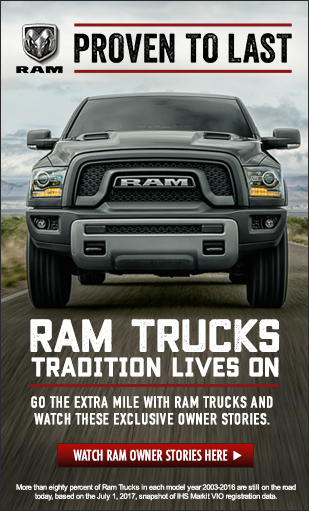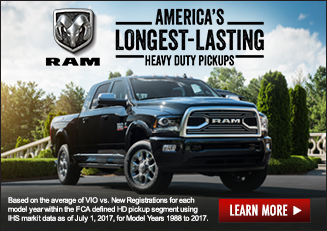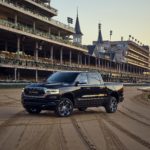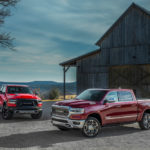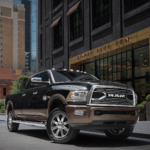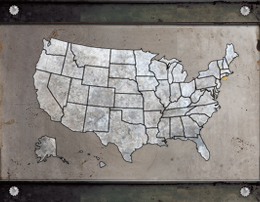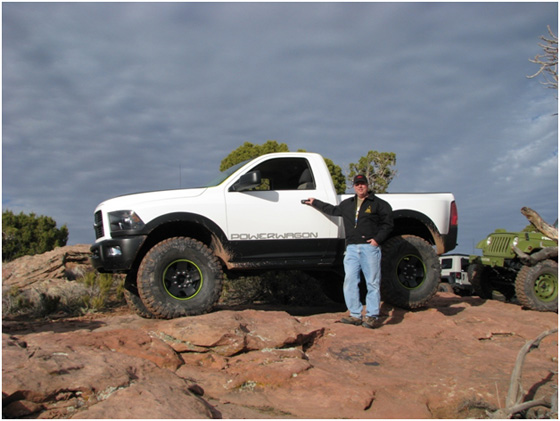
We recently had the opportunity to sit down with Mike Cairns, a 25-year Chrysler veteran who heads up our entire line of current and future truck engineering development. With an extensive background in engineering, Mike joined our team in 1985, specializing in impact testing and development. He now serves as the Chrysler Group’s Vehicle Line Executive for all truck engineering programs, making him our expert go-to guy for anything you’d ever want to know about why this year’s Ram Truck models are technologically superior to anything you’ve seen before.
Check out Mike’s explanations about how the engineering of Ram trucks deliver a higher quality product, and what we can expect to see in the Ram Trucks 2011 lineup.
RZ: You mentioned how much quieter the vehicles are. From a technical and engineering standpoint, what were the major advancements from the previous generation that made this possible?
MC: Well, there are many things that are significantly new. As a matter of fact, the 1500 is essentially all new. The chassis was redone with the first in segment and class leading multi-link coil rear suspension that has set a new benchmark for ride and handling. This new chassis provides the most significant advancement by reducing and eliminating overall vibrations. The 2500s and 3500s already had a solid chassis and we improved the tuning of the suspension with much better computer modeling. Common to all new Ram trucks is the new cab – better architecture, better structure in the cab really helps to isolate vibrations. Another (advancement) is noise abatement. The doors have triple seals where the previous truck had a single seal, so it seal(s) out a lot of the noise of passing cars, road noise and wind noise. Also, we did a lot of work on the acoustic(s) in the dash panel – the metal panel between the engine compartment and the occupant compartment. We (also) put (in) a lot of insulating material. We did a lot of work on dimension control and got rid of a lot of gaps and holes that might pass noise through. Especially on the 1500 model, we did a tremendous amount of work on aerodynamics. We reduced the aerodynamic drag by 10%.
RZ: Do you know what the coefficient of drag is, offhand?
MC: The coefficient of drag on our best truck is .387 Cd, which is best-in-class for pickup trucks. It not only improves fuel economy, because there’s less drag to push through the wind, but it also reduces noise because there’s less turbulence.
RZ: The spoiler on the deck lid – does that fall into that category?
MC: Absolutely. That’s a big part of the aerodynamic package. Just look at the front end, the way the headlamps fit to the fenders, to the bumper. Everything is tightened up, (with) very small gaps because those are all areas of drag. (And) lower air dams that are actually within the angle of approach so they don’t diminish (the truck’s) off-road ability. And…on the side view mirrors, finding the sweet spot of where to put them and how to shape them. The big dually fenders are also very aerodynamic. They’re sculpted by the wind, whereas some of our competitors just slap on plastic fenders that are just blocks to the wind.
RZ: Moving from the previous Ram HD to the new model, what engineering feats made that vehicle the most confident tool in the towing category?
MC: Well, we set a precedent with the 1500 model with the new link coil rear suspension – clearly the benchmark ride in the industry right now – nobody is even close. When we were doing the HD, we decided to stick with the leaf spring rear suspension, but still wanted to provide a best-in-class ride. We accomplished this with computer modeling to better balance the front and rear springs. So, better tuning each spring and shock to each particular model, and develop(ing) a hydromount at the rearmost cab mount to the frame. It’s very effective (at) absorbing a lot of the shake you get with an HD pick-up truck.
In 2009, we made an upgrade to our base brakes which still (have) the largest swept area – where the pad material touches the rotor, and carried that base brake into the ‘10 and ‘11 models. We have tremendously good base brakes – very strong and fade-resistant. (They are) coupled with, when you get the diesel, the exhaust brake (EB). We also have the most effective EB in the industry, (leading to) less wear on your brakes and less chance of overheating. So the braking system is still best-in-class. That’s one of those key things to a great tow vehicle. It’s great to be able to get up the hill but it’s also important to be able to get down again and actually stop.
RZ: We understand that DEF has been eliminated …in the Cummins engines. (Could) you briefly touch on what it is why it’s important?
MC: We didn’t eliminate it – we’ve never had it. The EPA passed new exhaust regulations for 2010. They passed the legislation a number of years ago so we knew in enough time that when we launched the Cummins Turbo Diesel in 2007 we’d already met the 2010 emissions requirements. Our competitors did not, and they had to do full system revisions and completely change their diesel engines in 2010. They decided to use this area-based DEF injection system, which brings a lot of complications – you have to carry around an extra tank full of DEF, (which is) injected into the exhaust stream to meet the 2010 nitrous oxide emissions regulations. Working with Cummins, we (had) already met that requirement so we made no changes. It’s a beautiful thing – we’ve got a proven, tried-and-true product with no big change versus our competitors that have these… elaborate system(s) that (are) unproven and untested.
RZ: Are there any areas of the Ram lineup that you’re particularly proud of that would be interesting to pickup or commercial truck shoppers?
MC: One is the Cummins diesel engine compared to our competitors’ diesel engine. When you see the Cummins engine, it is a commercial truck-grade motor. It has a cast iron block, cast iron head, steel oil pans and a cast aluminum intake. Compare that to our competitors’ new diesels. They are V8’s (with) aluminum heads, plastic intakes and plastic oil pans. I don’t think there’s a comparison in terms of long-term durability.
The Power Wagon (2500) is one of those trucks that (is) often overlooked. (It’s a) heavy-duty pickup truck and it’s the most capable off-road truck made today, (including) Ford’s new Raptor. The Raptor is a one-trick pony. It’s a high-speed desert racer based on a 1500 truck, and it’s not a work truck. It has a limited tow rating, limited payload. For what it is, the Power Wagon is a 2500 Heavy Duty truck and therefore has terrific payload and tow ratings. In addition to that, without sacrificing anything, it’ll go anywhere, climb through mud, climb over rocks, anything.
The new Outdoorsman – this is a great truck. Many of us are…outdoorsmen, and we really wanted to build a truck that appealed to folks like us. Right off the bat, you notice the tires. On the Outdoorsman 1500, you get a light truck tire with much tougher sidewalls, which are better for off-roading and more resistant to puncture. Shocks are tuned for off-road ability…it’s got 4×4, and is available with the Rambox (holster), which is a great place to store your gun, fishing poles, etc. It’s a great get-you-anywhere truck and it’s just a package we think appeals to guys like us.













